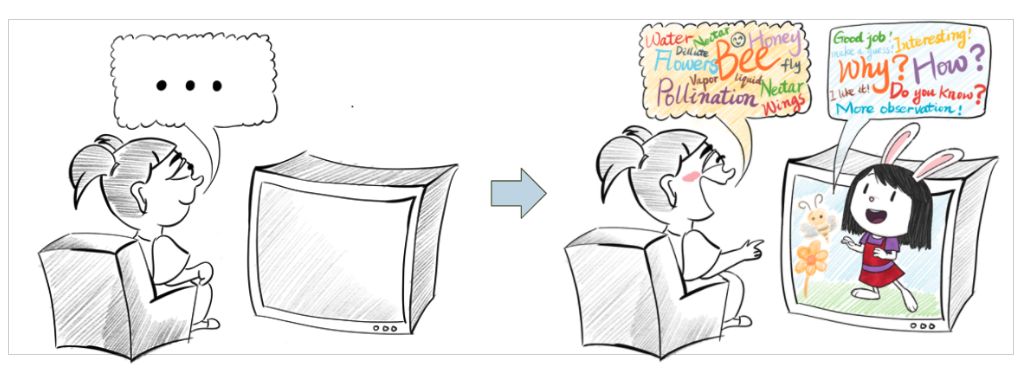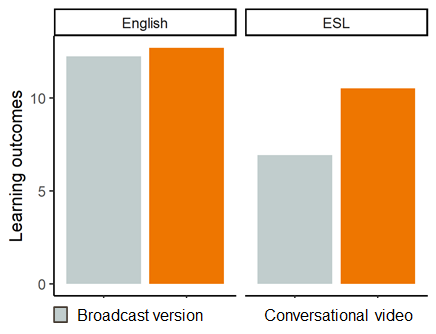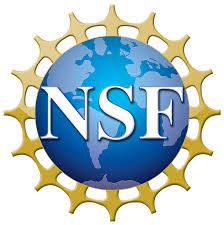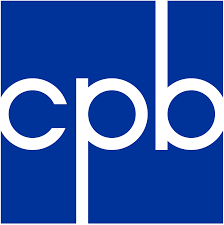Conversational Technologies for Supporting STEM Discourse
In this line of research, we integrate conversational agents into STEM oriented television shows to allow children to directly speak with the show's main characters. The conversation is designed to prime children to engage in observation, prediction, pattern identification, and problem solving.
Parenting with PBS KIDS, we have developed such “conversational videos” of their science show, “Elinor Wonders Why.” Elinor, the main character, asks children questions, listens for their answers, and provides responsive feedback. Click here for a one minute video demonstration. Click here for our Open Science Foundation preregistration.
Parenting with PBS KIDS, we have developed such “conversational videos” of their science show, “Elinor Wonders Why.” Elinor, the main character, asks children questions, listens for their answers, and provides responsive feedback. Click here for a one minute video demonstration. Click here for our Open Science Foundation preregistration.
We have completed an evaluation of the conversational video, and here are what we have learned:
Our research so far has established the feasibility of integrating conversational agents in children’s STEM television programs. We are continuing to partner with PBS KIDS to further the impacts of this innovative work.
- The conversational video resulted in children’s better understanding of the science concepts. This positive effect was robust across children from both low- and high-income neighborhoods.
- The conversational video had a compensatory effect for language minority children.
- The conversational video helped children form a positive relationship with the media characters.
- The conversational video elicited children’s active verbal engagement during video watching.
- The conversational video also appeared to encourage parents’ active co-viewing.
Our research so far has established the feasibility of integrating conversational agents in children’s STEM television programs. We are continuing to partner with PBS KIDS to further the impacts of this innovative work.
Future Work
We have been awarded a $3 million NSF grant to extend this project along three directions:
We have been awarded a $3 million NSF grant to extend this project along three directions:
- We will improve the design of the conversational videos/characters to increase their potential communicative and educational benefits.
- The media characters will be designed to process multilingual speech input so that children may respond not only in English but also in their home language.
- We will enhance the media characters' capability to engage in in-depth back and forth conversation so that children can have multiple exchanges on a topic.
- We will provide multimedia scaffolding during the conversation to facilitate children's verbal interaction with the characters.
- We will conduct large scale longitudinal studies to examine how children and their families interact with and learn from conversational videos naturalistically in their homes, focusing on Latine children in under-resourced households.
- At the end of this project, the conversational videos produced from this project will be distributed distributing the conversational videos as publicly accessible content at no cost to children and families through the PBS KIDS app and website to millions of children across the country.




